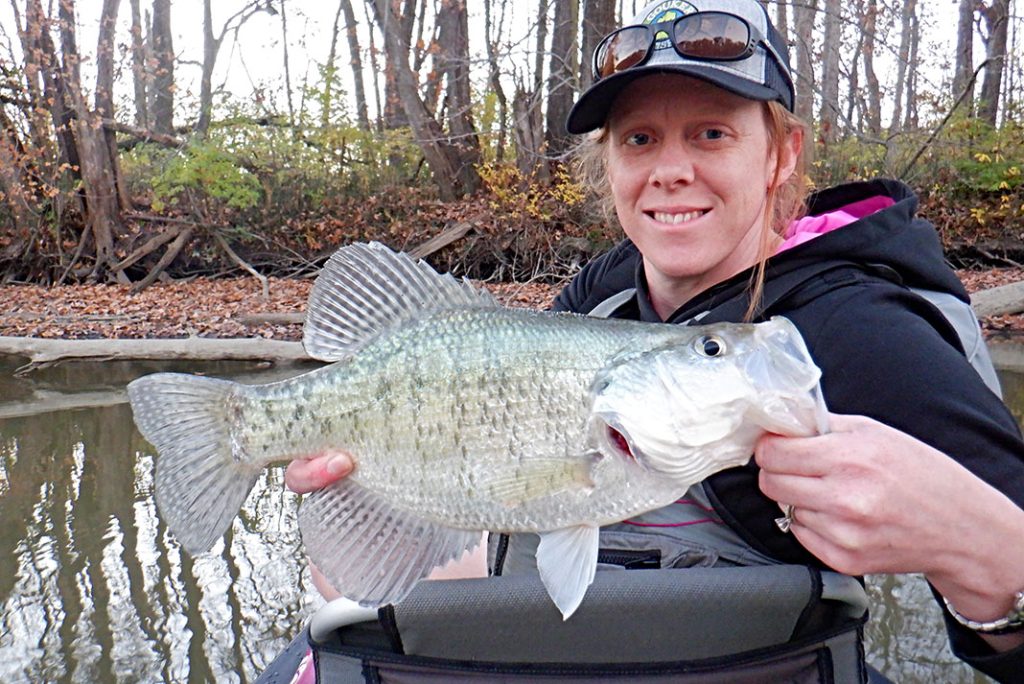Crappie fishing is one of the most exciting and relaxing experiences of fishing ever known to anglers in North America. No matter why you are fishing for crappie, for sport, or food, crappie fish do not disappoint as they provide plenty of challenges, both in behaviour and in habitat, as well as when they swim to spawn in the spring.
We will cover everything you need to know about this popular fish species. It includes types of crappie, where they live, and the best strategies for catching them any time of the year.
What is a Crappie Fish?
Crappie are freshwater fish in the sunfish family. They have a mild taste, firm white flesh and are popular with recreational fishers.
There are two main species:
Dark in colour, has uneven speckled spots, and prefers the clear, cooler water.
White Crappie (Pomoxis annularis): Often paler with vertical streaks on their body, and tend to prefer warmer, murkier water.
The two species are closely matched in size and habits, but they are slightly separated by their habitat and appearance.
Where Are Crappie Found?
Crappie are indigenous to the eastern United States and Canada but have been widely introduced elsewhere. They favour freshwater lakes, ponds, sluggish rivers and reservoirs.
Look for them near:
Submerged trees and brush piles
Drop-offs and ledges
Shaded shorelines
Docks and bridges
Crappie are schooling fish, so when you catch one, there’s a good chance there are more nearby.
Best Time To Catch Crappie
Crappie Season: Crappie can be caught year-round, although some seasons are more fruitful:
Spring (Pre-Spawn): This is the peak season for catching crappie. During the spring, when the water starts to warm up to 55–65 °F (13–18 °C), crappie migrate to shallower parts of the water to lay their eggs.
Summer: Crappie will be deeper in cooler water. Vertical Jigging and Trolling are effective this time.
Fall: Crappie stride into feeding mode in cooler waters before winter arrives. Live bait fished shallow to mid-depths is the key approach.
Winter: According to the Washington Post, ice fishing is popular in northern states. Crappie Suspending in Deeper Basins.
Crappie Fishing Gear and Tackle
Crappie are light biters and favour light gear:
Rod & Reel: Ultralight to light-action spinning rods (5-7 feet)
Line: 2 – 6 lb monofilament or fluorocarbon
Hooks: 2 to 6, depending on the size of the bait and the crappie
Bobbers: For fishing at depths
Jigs: bright (pink, chartreuse, white) 1/16 to 1/8 oz.
Bait: Minnows, waxworms or small worms
Fish with small jig heads tipped with soft plastics or live bait, or with slip bobbers to position your bait precisely at certain depths.
Techniques for Catching Crappie
Here are some of the best approaches:
Casting with Jigs
Chinese along structures and retrieve very slowly with a gentle twitch. Fish Curly Tail Grubs or Tube Jigs for best success.
Vertical Jigging
Especially useful in deeper water. Drop your offering right into the thick stuff and slowly jig up and down.
Trolling
Troll more than one Jig or Crankbait behind your boat when fishing open water or during the hot summer months, and experiment with different depths.
Slip Bobber Fishing
This method allows you to catch suspended crappie in brush or trees. Move the stopper to the desired depth.
Ice Fishing
Small jigs tipped with waxworms or plastics over a flasher or sonar are good winter patterns for school fish.
Are Crappie Good to Eat?
Yes! Crappie are known for their sweet, mild flavour and flaky white meat. They’re best prepared by:
Deep-Frying: The jeon that most people know best, seasoned, battered, and fried to golden brown.
Grilled: Marinate and grill crappie whole or in fillets.
Baking: Easy, healthy with herbs and lemon.
Tacos: Crappie are amazing for fish tacos with slaw and spicy mayo.
Remember to adhere to local restrictions as many states have rules about size and bag limits to help protect the species.
Cleaning and Filleting Crappie
Crappie are easy to clean:
Rinse and scale the fish.
With a fillet knife, make a cut behind the gill plate down to the backbone.
Flip the blade and slide it down the backbone to the tail.
Cut the ribcage out of the fillet.
Rinse and pat dry.
Some fishermen like to skin the fillets for a cleaner flavour.
Conservation and Responsible Fishing
Crappie are prolific breeders, producing large numbers of young, although they can be overfished if not properly managed. Follow these tips:
Adhere to catch limits and size restrictions.
Release fish spawing seasons when fishing.
Where you can use barbless hooks as they are more easily removed.
Without practicing responsible fishing, our crappie populations would be over harvested.
FAQs About Crappie Fish
What is the best bait for crappie?
Minnows are the best bait, though bright-colored soft plastic jigs will catch fish.
How big do crappie get?
There are a lot of 6- to 12-inch crappie that weigh less than 1 pound, but they can also reach to more than 15 inches and 2 pounds for a trophy.
Can I catch crappie at night?
Yes! Crappie eat at night, especially around lighted docks or under water lights to draw baitfish.
Will crappie bite in cold weather?
Yes, they do, only they migrate to deeper water. They can be located by ice fishing or by the use of sonar.
What is the best crappie fishing depth?
You’ll find them at different depths, depending on the season, from 2 to 10 feet in spring and 15 to 30 feet in summer and winter.
Conclusion:
Crappie fishing is one of the best pastime events for anglers, both beginners and pros. Casting from shore or drifting in a boat, these fish offer steady action, good eating, and the pleasure of being outdoors. Arm yourself with the proper method, as well as respect the resource, and you can have one of the most enjoyable fishing experiences possible!


